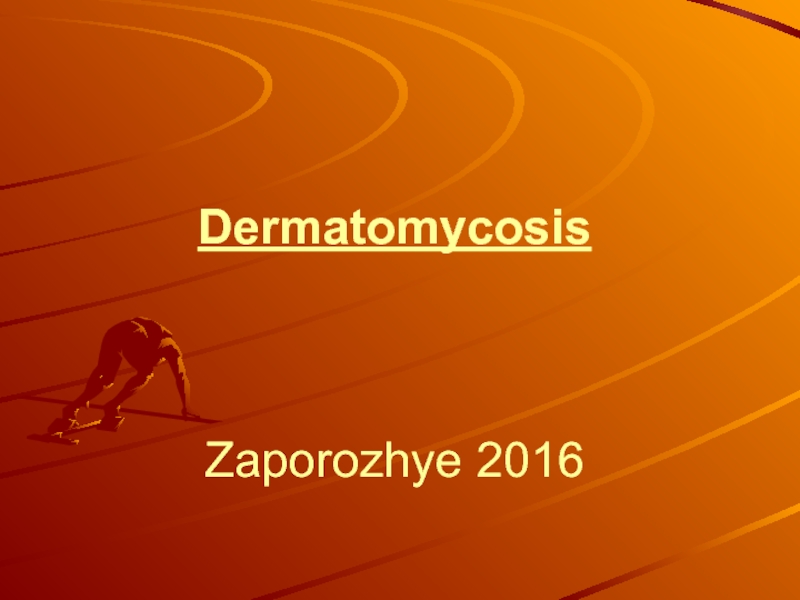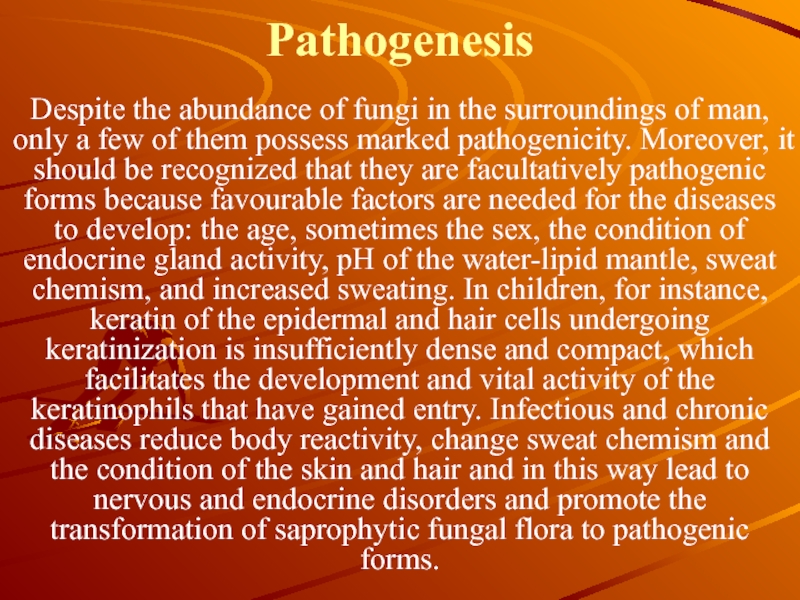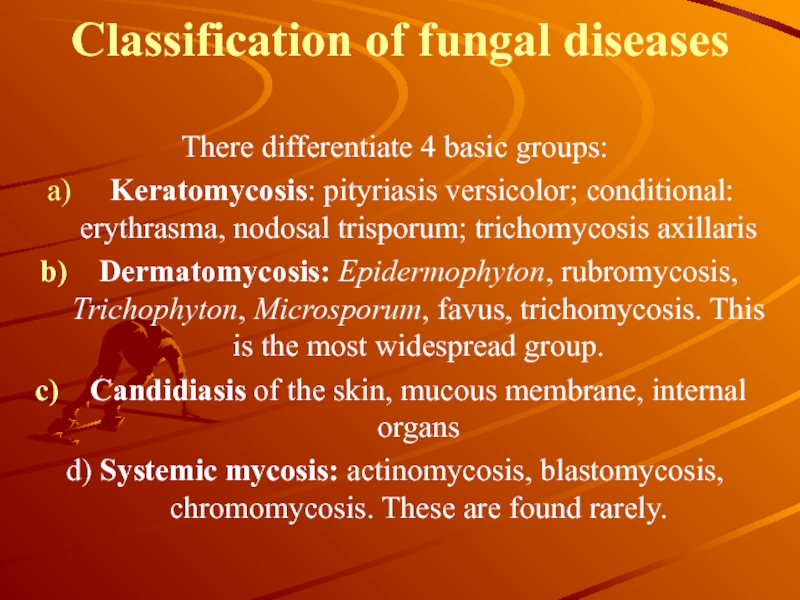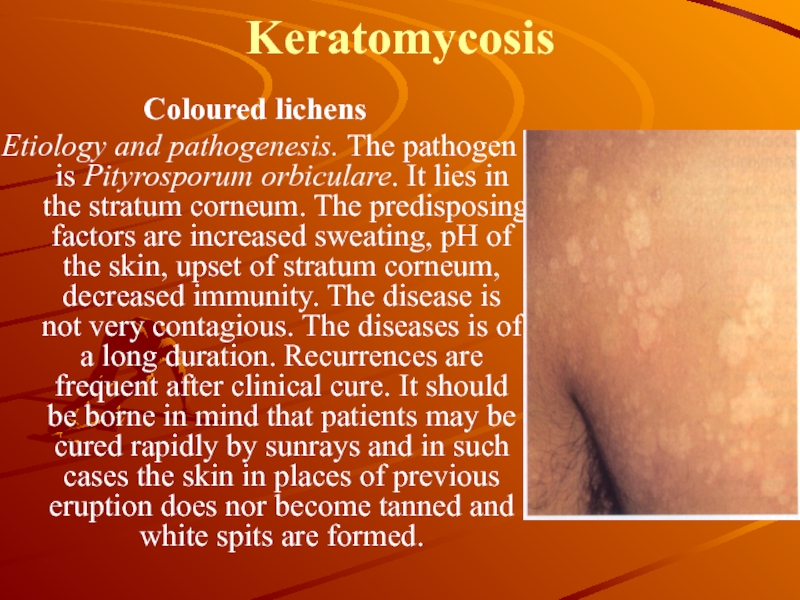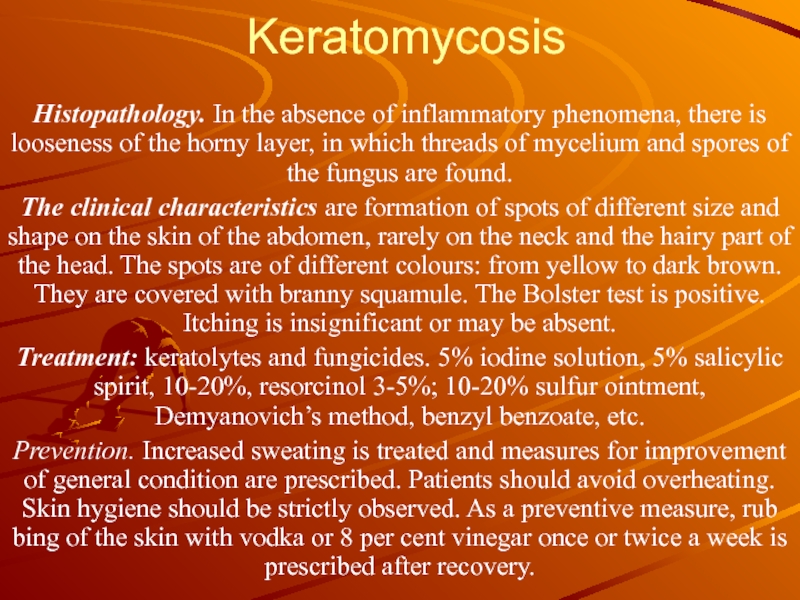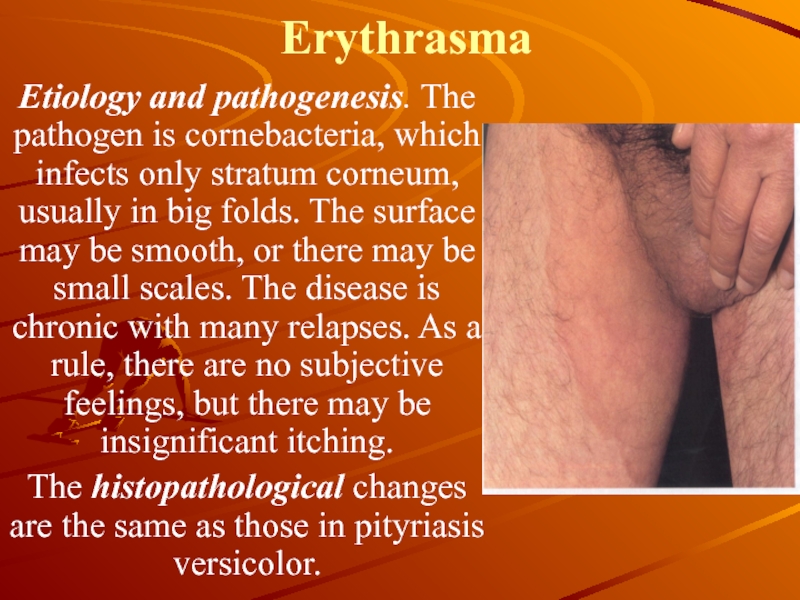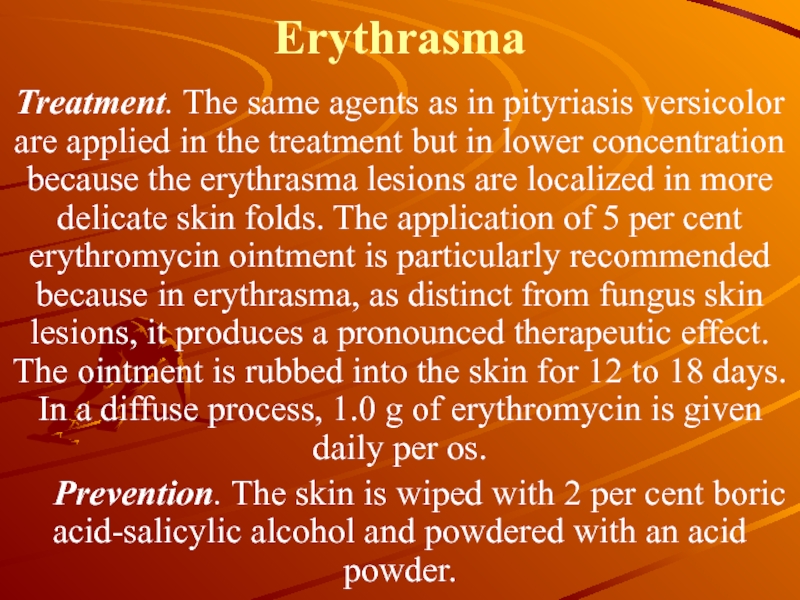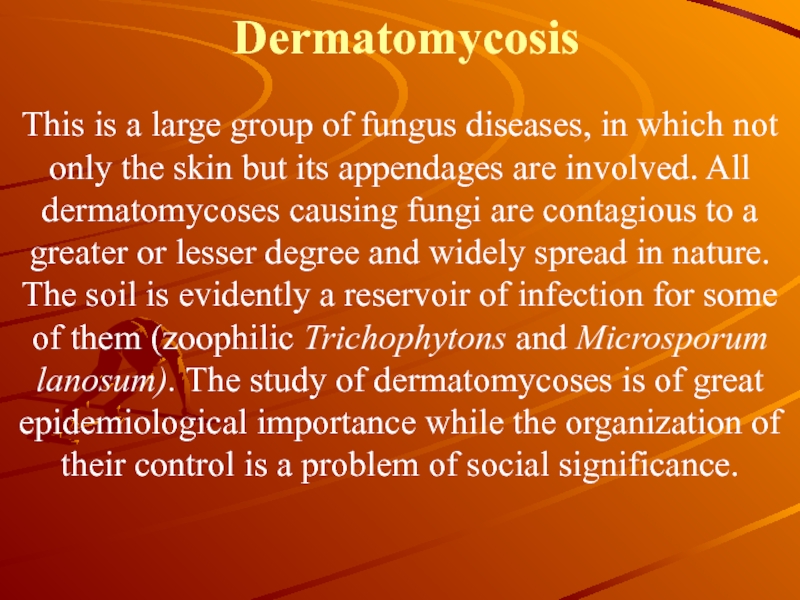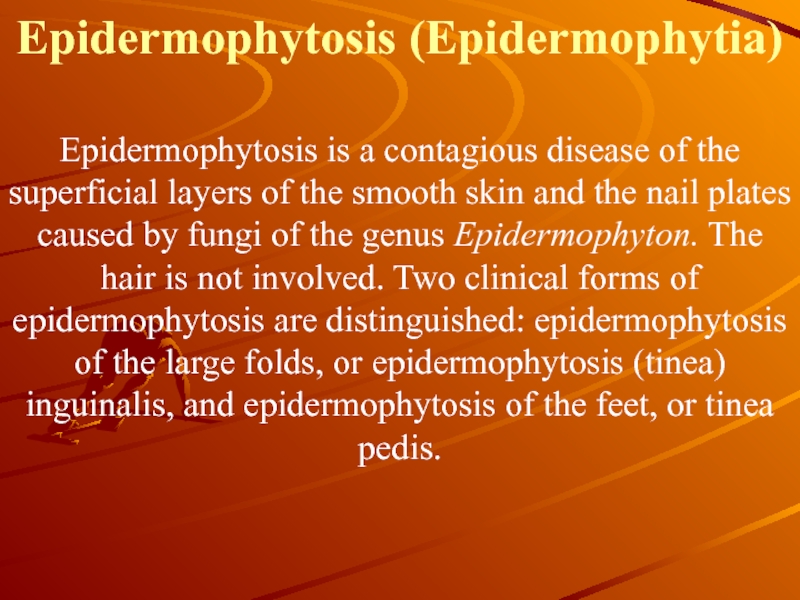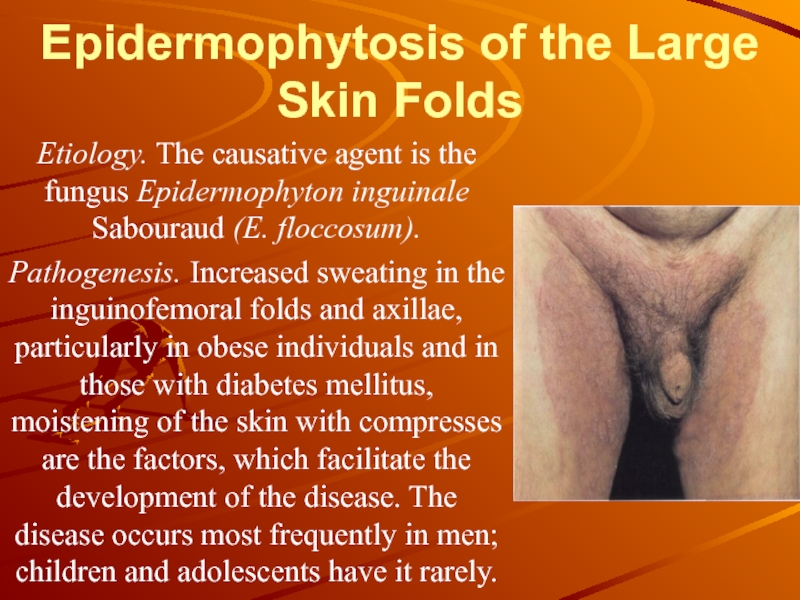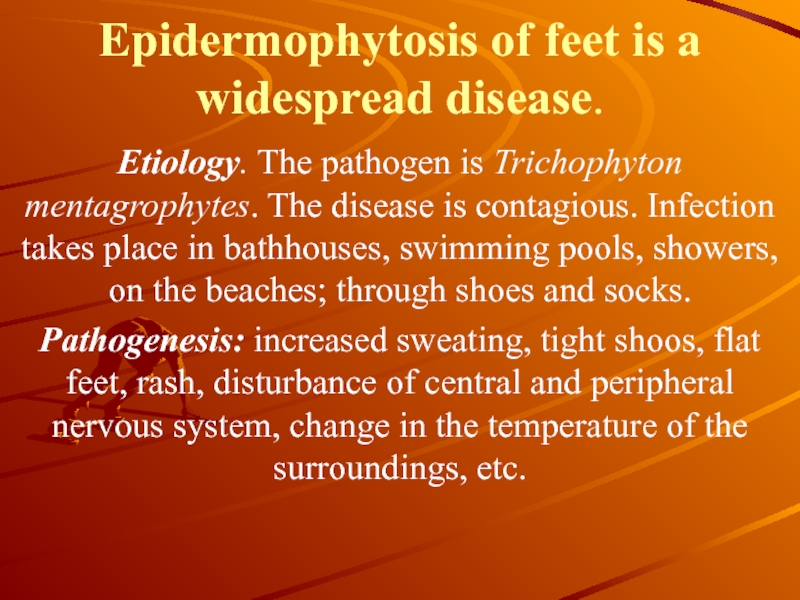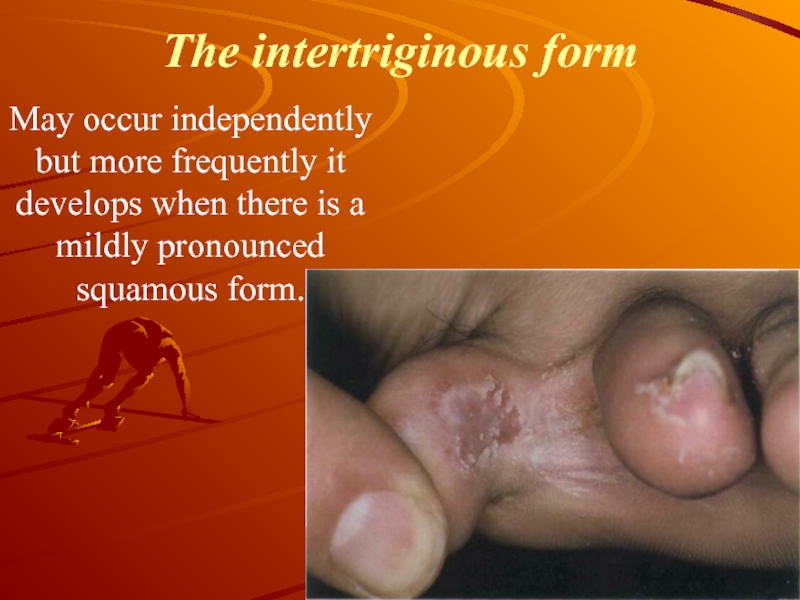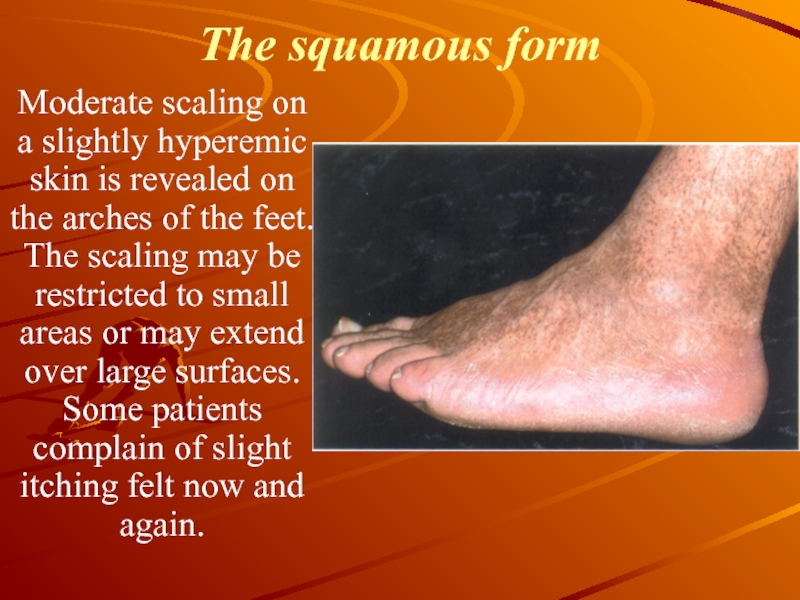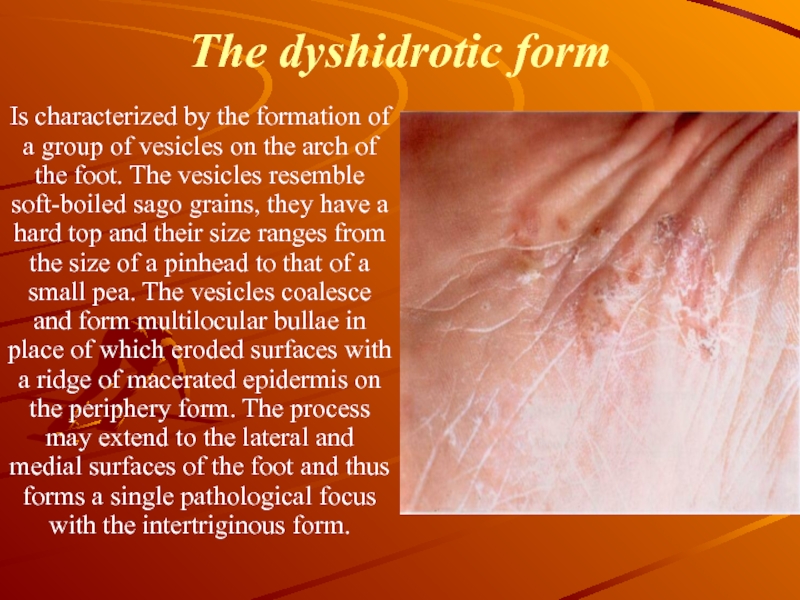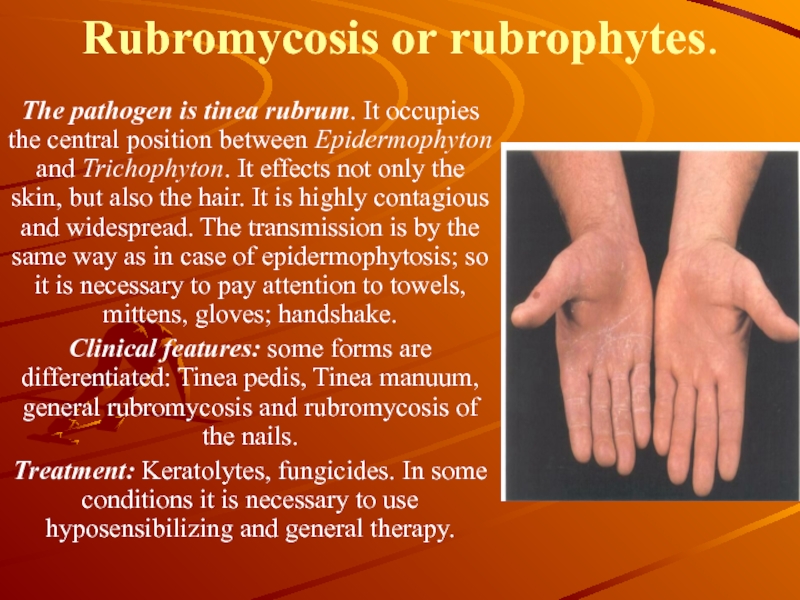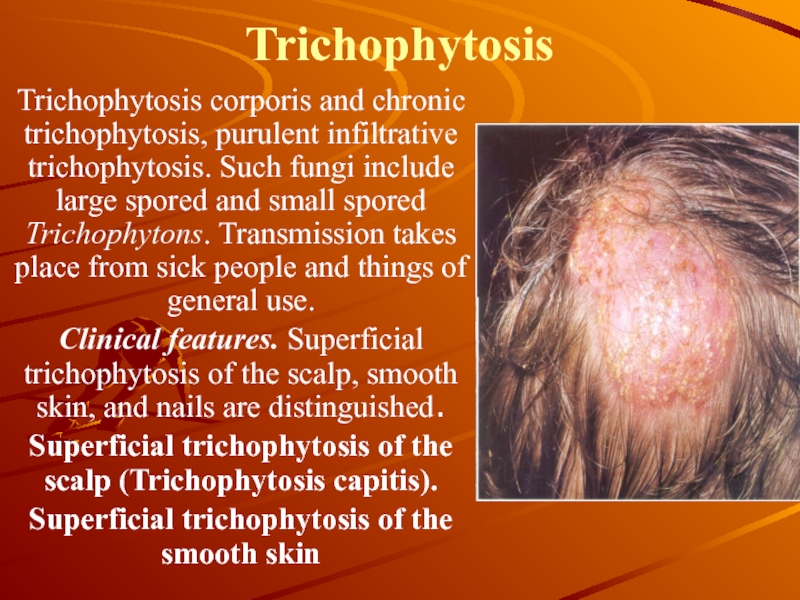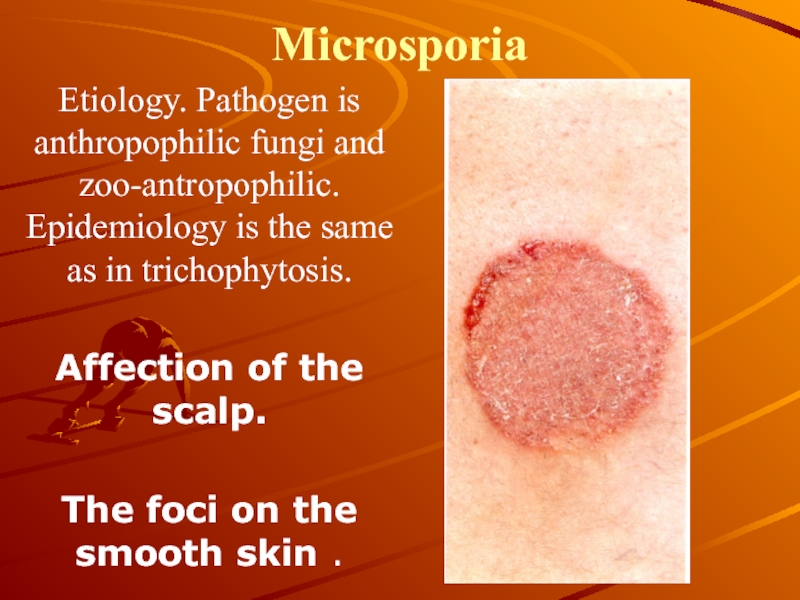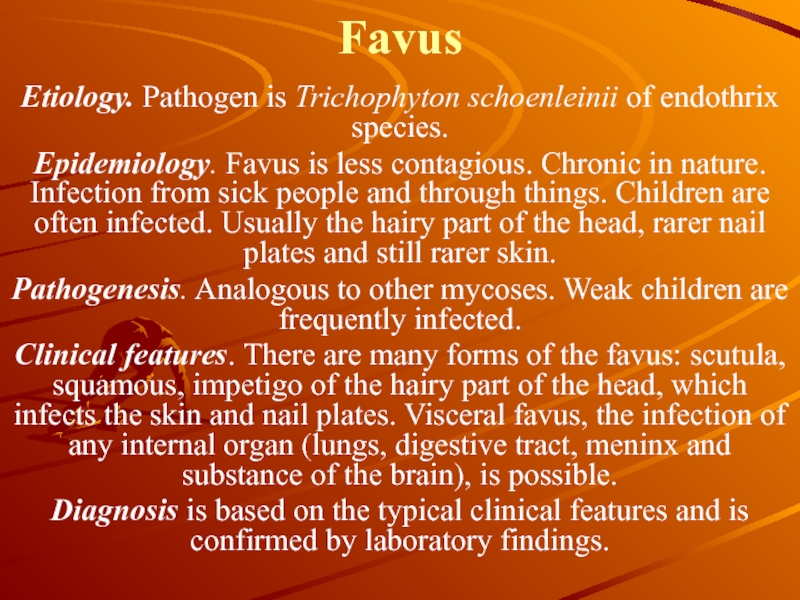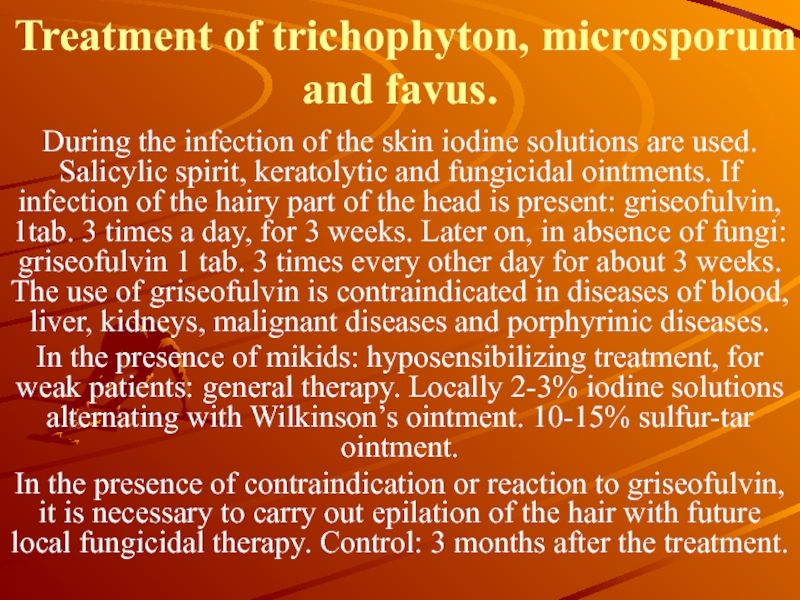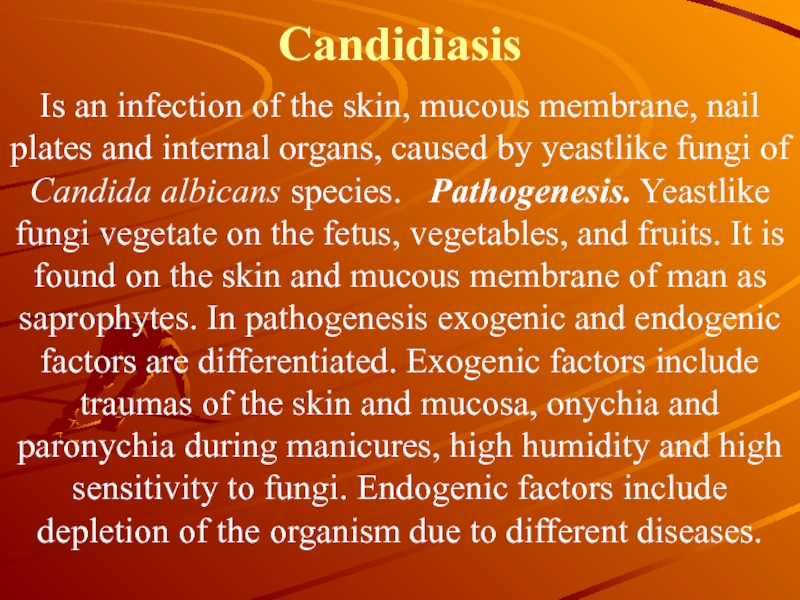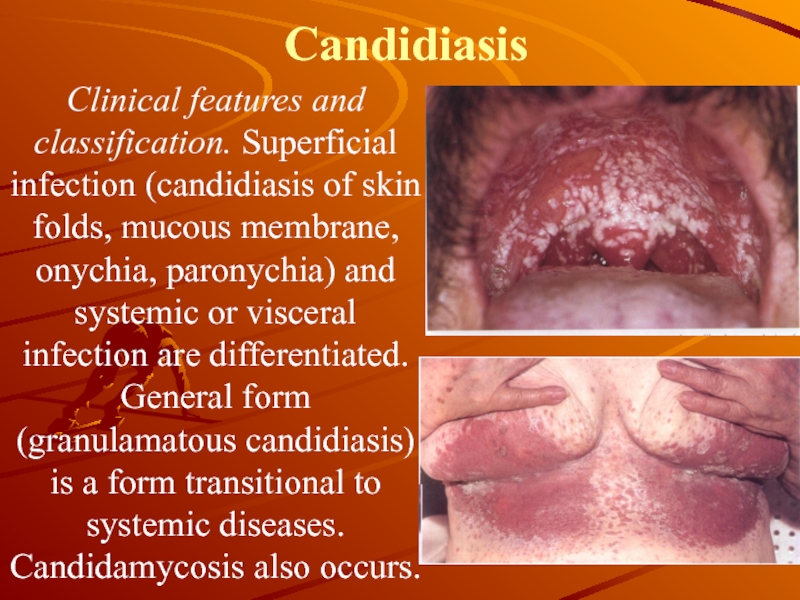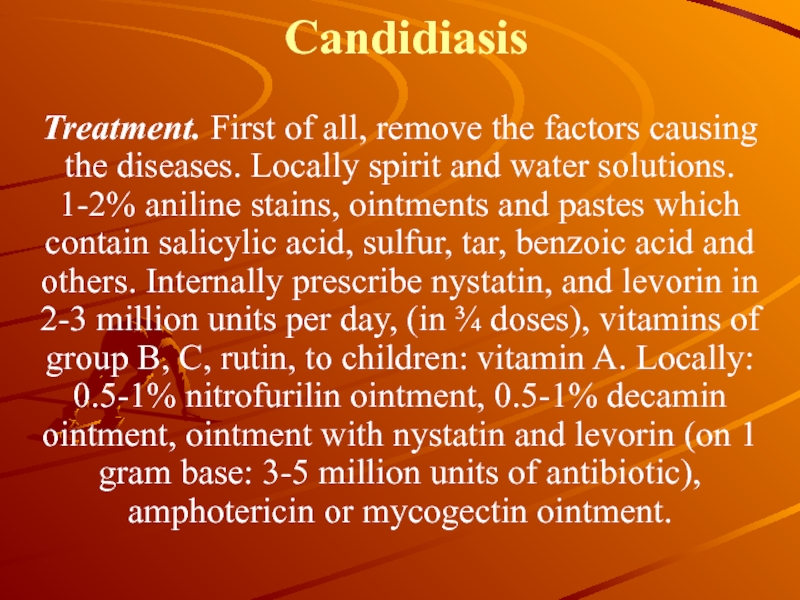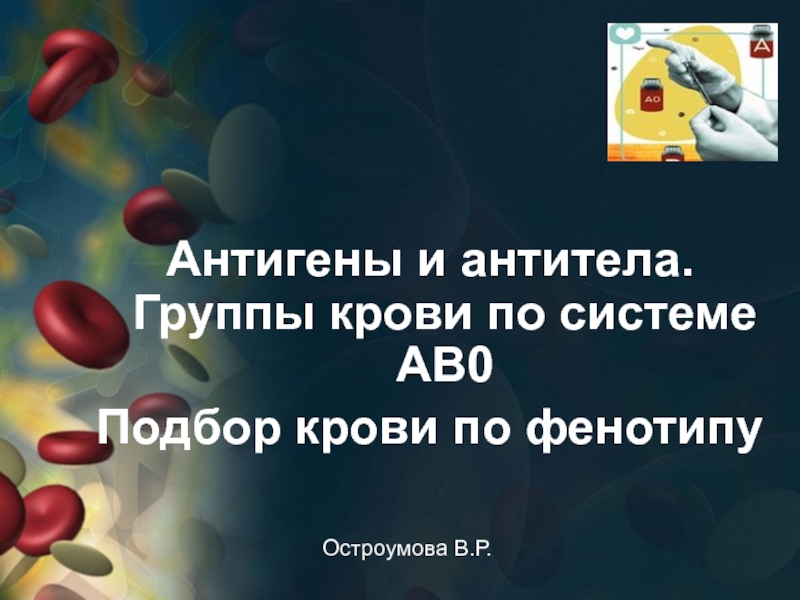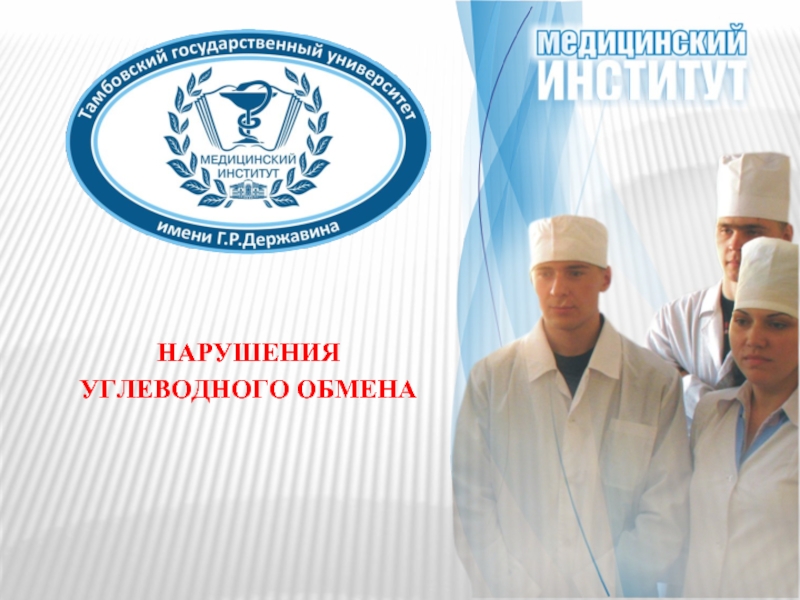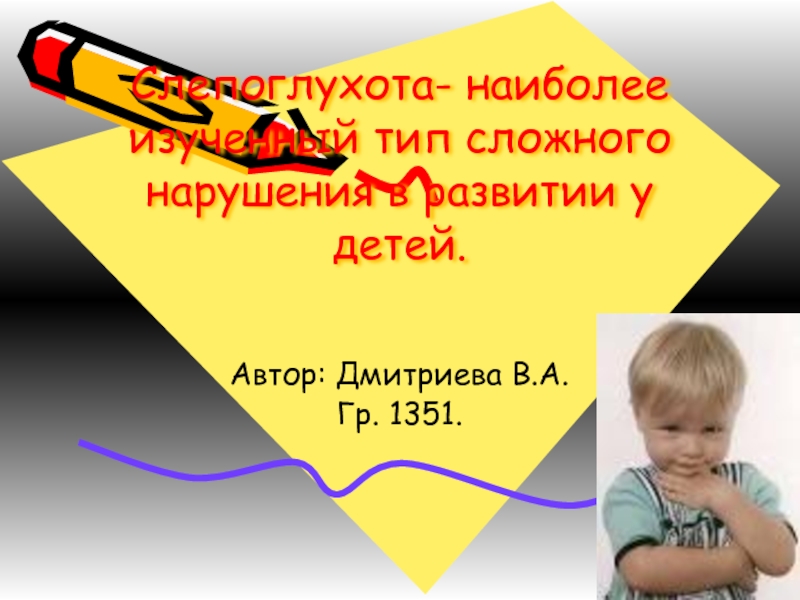- Главная
- Разное
- Дизайн
- Бизнес и предпринимательство
- Аналитика
- Образование
- Развлечения
- Красота и здоровье
- Финансы
- Государство
- Путешествия
- Спорт
- Недвижимость
- Армия
- Графика
- Культурология
- Еда и кулинария
- Лингвистика
- Английский язык
- Астрономия
- Алгебра
- Биология
- География
- Детские презентации
- Информатика
- История
- Литература
- Маркетинг
- Математика
- Медицина
- Менеджмент
- Музыка
- МХК
- Немецкий язык
- ОБЖ
- Обществознание
- Окружающий мир
- Педагогика
- Русский язык
- Технология
- Физика
- Философия
- Химия
- Шаблоны, картинки для презентаций
- Экология
- Экономика
- Юриспруденция
Dermatomycosis. Pathogenesis презентация
Содержание
- 1. Dermatomycosis. Pathogenesis
- 2. Pathogenesis Despite the abundance of fungi
- 3. Classification of fungal diseases There differentiate
- 4. Keratomycosis Coloured lichens Etiology and pathogenesis.
- 5. Keratomycosis Histopathology. In the absence of
- 6. Erythrasma Etiology and pathogenesis. The pathogen
- 7. Erythrasma Treatment. The same agents as in
- 8. Dermatomycosis This is a large group of
- 9. Epidermophytosis (Epidermophytia) Epidermophytosis is a contagious disease
- 10. Epidermophytosis of the Large Skin Folds
- 11. Epidermophytosis of feet is a widespread disease.
- 12. The intertriginous form Мay occur independently
- 13. The squamous form Moderate scaling on
- 14. The dyshidrotic form Is characterized by
- 15. Rubromycosis or rubrophytes. The pathogen is
- 16. Trichophytosis Trichophytosis corporis and chronic trichophytosis,
- 17. Microsporia Etiology. Pathogen is anthropophilic fungi and
- 18. Favus Etiology. Pathogen is Trichophyton schoenleinii of
- 19. Treatment of trichophyton, microsporum and favus.
- 20. Candidiasis Is an infection of the
- 21. Candidiasis Clinical features and classification. Superficial infection
- 22. Candidiasis Treatment. First of all, remove the
- 23. Thank you for attention
Слайд 2Pathogenesis
Despite the abundance of fungi in the surroundings of man, only
a few of them possess marked pathogenicity. Moreover, it should be recognized that they are facultatively pathogenic forms because favourable factors are needed for the diseases to develop: the age, sometimes the sex, the condition of endocrine gland activity, pH of the water-lipid mantle, sweat chemism, and increased sweating. In children, for instance, keratin of the epidermal and hair cells undergoing keratinization is insufficiently dense and compact, which facilitates the development and vital activity of the keratinophils that have gained entry. Infectious and chronic diseases reduce body reactivity, change sweat chemism and the condition of the skin and hair and in this way lead to nervous and endocrine disorders and promote the transformation of saprophytic fungal flora to pathogenic forms.
Слайд 3Classification of fungal diseases
There differentiate 4 basic groups:
Keratomycosis: pityriasis versicolor;
conditional: erythrasma, nodosal trisporum; trichomycosis axillaris
Dermatomycosis: Epidermophyton, rubromycosis, Trichophyton, Microsporum, favus, trichomycosis. This is the most widespread group.
Candidiasis of the skin, mucous membrane, internal organs
d) Systemic mycosis: actinomycosis, blastomycosis, chromomycosis. These are found rarely.
Dermatomycosis: Epidermophyton, rubromycosis, Trichophyton, Microsporum, favus, trichomycosis. This is the most widespread group.
Candidiasis of the skin, mucous membrane, internal organs
d) Systemic mycosis: actinomycosis, blastomycosis, chromomycosis. These are found rarely.
Слайд 4Keratomycosis
Coloured lichens
Etiology and pathogenesis. The pathogen is Pityrosporum orbiculare. It
lies in the stratum corneum. The predisposing factors are increased sweating, pH of the skin, upset of stratum corneum, decreased immunity. The disease is not very contagious. The diseases is of a long duration. Recurrences are frequent after clinical cure. It should be borne in mind that patients may be cured rapidly by sunrays and in such cases the skin in places of previous eruption does nor become tanned and white spits are formed.
Слайд 5Keratomycosis
Histopathology. In the absence of inflammatory phenomena, there is looseness
of the horny layer, in which threads of mycelium and spores of the fungus are found.
The clinical characteristics are formation of spots of different size and shape on the skin of the abdomen, rarely on the neck and the hairy part of the head. The spots are of different colours: from yellow to dark brown. They are covered with branny squamule. The Bolster test is positive. Itching is insignificant or may be absent.
Treatment: keratolytes and fungicides. 5% iodine solution, 5% salicylic spirit, 10-20%, resorcinol 3-5%; 10-20% sulfur ointment, Demyanovich’s method, benzyl benzoate, etc.
Prevention. Increased sweating is treated and measures for improvement of general condition are prescribed. Patients should avoid overheating. Skin hygiene should be strictly observed. As a preventive measure, rubbing of the skin with vodka or 8 per cent vinegar once or twice a week is prescribed after recovery.
The clinical characteristics are formation of spots of different size and shape on the skin of the abdomen, rarely on the neck and the hairy part of the head. The spots are of different colours: from yellow to dark brown. They are covered with branny squamule. The Bolster test is positive. Itching is insignificant or may be absent.
Treatment: keratolytes and fungicides. 5% iodine solution, 5% salicylic spirit, 10-20%, resorcinol 3-5%; 10-20% sulfur ointment, Demyanovich’s method, benzyl benzoate, etc.
Prevention. Increased sweating is treated and measures for improvement of general condition are prescribed. Patients should avoid overheating. Skin hygiene should be strictly observed. As a preventive measure, rubbing of the skin with vodka or 8 per cent vinegar once or twice a week is prescribed after recovery.
Слайд 6Erythrasma
Etiology and pathogenesis. The pathogen is cornebacteria, which infects only
stratum corneum, usually in big folds. The surface may be smooth, or there may be small scales. The disease is chronic with many relapses. As a rule, there are no subjective feelings, but there may be insignificant itching.
The histopathological changes are the same as those in pityriasis versicolor.
The histopathological changes are the same as those in pityriasis versicolor.
Слайд 7Erythrasma
Treatment. The same agents as in pityriasis versicolor are applied in
the treatment but in lower concentration because the erythrasma lesions are localized in more delicate skin folds. The application of 5 per cent erythromycin ointment is particularly recommended because in erythrasma, as distinct from fungus skin lesions, it produces a pronounced therapeutic effect. The ointment is rubbed into the skin for 12 to 18 days. In a diffuse process, 1.0 g of erythromycin is given daily per os.
Prevention. The skin is wiped with 2 per cent boric acid-salicylic alcohol and powdered with an acid powder.
Prevention. The skin is wiped with 2 per cent boric acid-salicylic alcohol and powdered with an acid powder.
Слайд 8Dermatomycosis
This is a large group of fungus diseases, in which not
only the skin but its appendages are involved. All dermatomycoses causing fungi are contagious to a greater or lesser degree and widely spread in nature. The soil is evidently a reservoir of infection for some of them (zoophilic Trichophytons and Microsporum lanosum). The study of dermatomycoses is of great epidemiological importance while the organization of their control is a problem of social significance.
Слайд 9Epidermophytosis (Epidermophytia)
Epidermophytosis is a contagious disease of the superficial layers of
the smooth skin and the nail plates caused by fungi of the genus Epidermophyton. The hair is not involved. Two clinical forms of epidermophytosis are distinguished: epidermophytosis of the large folds, or epidermophytosis (tinea) inguinalis, and epidermophytosis of the feet, or tinea pedis.
Слайд 10Epidermophytosis of the Large Skin Folds
Etiology. The causative agent is
the fungus Epidermophyton inguinale Sabouraud (E. floccosum).
Pathogenesis. Increased sweating in the inguinofemoral folds and axillae, particularly in obese individuals and in those with diabetes mellitus, moistening of the skin with compresses are the factors, which facilitate the development of the disease. The disease occurs most frequently in men; children and adolescents have it rarely.
Pathogenesis. Increased sweating in the inguinofemoral folds and axillae, particularly in obese individuals and in those with diabetes mellitus, moistening of the skin with compresses are the factors, which facilitate the development of the disease. The disease occurs most frequently in men; children and adolescents have it rarely.
Слайд 11Epidermophytosis of feet is a widespread disease.
Etiology. The pathogen is
Trichophyton mentagrophytes. The disease is contagious. Infection takes place in bathhouses, swimming pools, showers, on the beaches; through shoes and socks.
Pathogenesis: increased sweating, tight shoos, flat feet, rash, disturbance of central and peripheral nervous system, change in the temperature of the surroundings, etc.
Pathogenesis: increased sweating, tight shoos, flat feet, rash, disturbance of central and peripheral nervous system, change in the temperature of the surroundings, etc.
Слайд 12The intertriginous form
Мay occur independently but more frequently it develops
when there is a mildly pronounced squamous form.
Слайд 13The squamous form
Moderate scaling on a slightly hyperemic skin is
revealed on the arches of the feet. The scaling may be restricted to small areas or may extend over large surfaces. Some patients complain of slight itching felt now and again.
Слайд 14The dyshidrotic form
Is characterized by the formation of a group
of vesicles on the arch of the foot. The vesicles resemble soft-boiled sago grains, they have a hard top and their size ranges from the size of a pinhead to that of a small pea. The vesicles coalesce and form multilocular bullae in place of which eroded surfaces with a ridge of macerated epidermis on the periphery form. The process may extend to the lateral and medial surfaces of the foot and thus forms a single pathological focus with the intertriginous form.
Слайд 15Rubromycosis or rubrophytes.
The pathogen is tinea rubrum. It occupies the
central position between Epidermophyton and Trichophyton. It effects not only the skin, but also the hair. It is highly contagious and widespread. The transmission is by the same way as in case of epidermophytosis; so it is necessary to pay attention to towels, mittens, gloves; handshake.
Clinical features: some forms are differentiated: Tinea pedis, Tinea manuum, general rubromycosis and rubromycosis of the nails.
Treatment: Keratolytes, fungicides. In some conditions it is necessary to use hyposensibilizing and general therapy.
Clinical features: some forms are differentiated: Tinea pedis, Tinea manuum, general rubromycosis and rubromycosis of the nails.
Treatment: Keratolytes, fungicides. In some conditions it is necessary to use hyposensibilizing and general therapy.
Слайд 16Trichophytosis
Trichophytosis corporis and chronic trichophytosis, purulent infiltrative trichophytosis. Such fungi
include large spored and small spored Trichophytons. Transmission takes place from sick people and things of general use.
Clinical features. Superficial trichophytosis of the scalp, smooth skin, and nails are distinguished.
Superficial trichophytosis of the scalp (Trichophytosis capitis).
Superficial trichophytosis of the smooth skin
Clinical features. Superficial trichophytosis of the scalp, smooth skin, and nails are distinguished.
Superficial trichophytosis of the scalp (Trichophytosis capitis).
Superficial trichophytosis of the smooth skin
Слайд 17Microsporia
Etiology. Pathogen is anthropophilic fungi and zoo-antropophilic. Epidemiology is the same
as in trichophytosis.
Affection of the scalp.
The foci on the smooth skin .
Affection of the scalp.
The foci on the smooth skin .
Слайд 18Favus
Etiology. Pathogen is Trichophyton schoenleinii of endothrix species.
Epidemiology. Favus is less
contagious. Chronic in nature. Infection from sick people and through things. Children are often infected. Usually the hairy part of the head, rarer nail plates and still rarer skin.
Pathogenesis. Analogous to other mycoses. Weak children are frequently infected.
Clinical features. There are many forms of the favus: scutula, squamous, impetigo of the hairy part of the head, which infects the skin and nail plates. Visceral favus, the infection of any internal organ (lungs, digestive tract, meninx and substance of the brain), is possible.
Diagnosis is based on the typical clinical features and is confirmed by laboratory findings.
Pathogenesis. Analogous to other mycoses. Weak children are frequently infected.
Clinical features. There are many forms of the favus: scutula, squamous, impetigo of the hairy part of the head, which infects the skin and nail plates. Visceral favus, the infection of any internal organ (lungs, digestive tract, meninx and substance of the brain), is possible.
Diagnosis is based on the typical clinical features and is confirmed by laboratory findings.
Слайд 19Treatment of trichophyton, microsporum and favus.
During the infection of the
skin iodine solutions are used. Salicylic spirit, keratolytic and fungicidal ointments. If infection of the hairy part of the head is present: griseofulvin, 1tab. 3 times a day, for 3 weeks. Later on, in absence of fungi: griseofulvin 1 tab. 3 times every other day for about 3 weeks. The use of griseofulvin is contraindicated in diseases of blood, liver, kidneys, malignant diseases and porphyrinic diseases.
In the presence of mikids: hyposensibilizing treatment, for weak patients: general therapy. Locally 2-3% iodine solutions alternating with Wilkinson’s ointment. 10-15% sulfur-tar ointment.
In the presence of contraindication or reaction to griseofulvin, it is necessary to carry out epilation of the hair with future local fungicidal therapy. Control: 3 months after the treatment.
In the presence of mikids: hyposensibilizing treatment, for weak patients: general therapy. Locally 2-3% iodine solutions alternating with Wilkinson’s ointment. 10-15% sulfur-tar ointment.
In the presence of contraindication or reaction to griseofulvin, it is necessary to carry out epilation of the hair with future local fungicidal therapy. Control: 3 months after the treatment.
Слайд 20Candidiasis
Is an infection of the skin, mucous membrane, nail plates
and internal organs, caused by yeastlike fungi of Candida albicans species. Pathogenesis. Yeastlike fungi vegetate on the fetus, vegetables, and fruits. It is found on the skin and mucous membrane of man as saprophytes. In pathogenesis exogenic and endogenic factors are differentiated. Exogenic factors include traumas of the skin and mucosa, onychia and paronychia during manicures, high humidity and high sensitivity to fungi. Endogenic factors include depletion of the organism due to different diseases.
Слайд 21Candidiasis
Clinical features and classification. Superficial infection (candidiasis of skin folds, mucous
membrane, onychia, paronychia) and systemic or visceral infection are differentiated. General form (granulamatous candidiasis) is a form transitional to systemic diseases. Candidamycosis also occurs.
Слайд 22Candidiasis
Treatment. First of all, remove the factors causing the diseases. Locally
spirit and water solutions. 1-2% aniline stains, ointments and pastes which contain salicylic acid, sulfur, tar, benzoic acid and others. Internally prescribe nystatin, and levorin in 2-3 million units per day, (in ¾ doses), vitamins of group B, C, rutin, to children: vitamin A. Locally: 0.5-1% nitrofurilin ointment, 0.5-1% decamin ointment, ointment with nystatin and levorin (on 1 gram base: 3-5 million units of antibiotic), amphotericin or mycogectin ointment.
